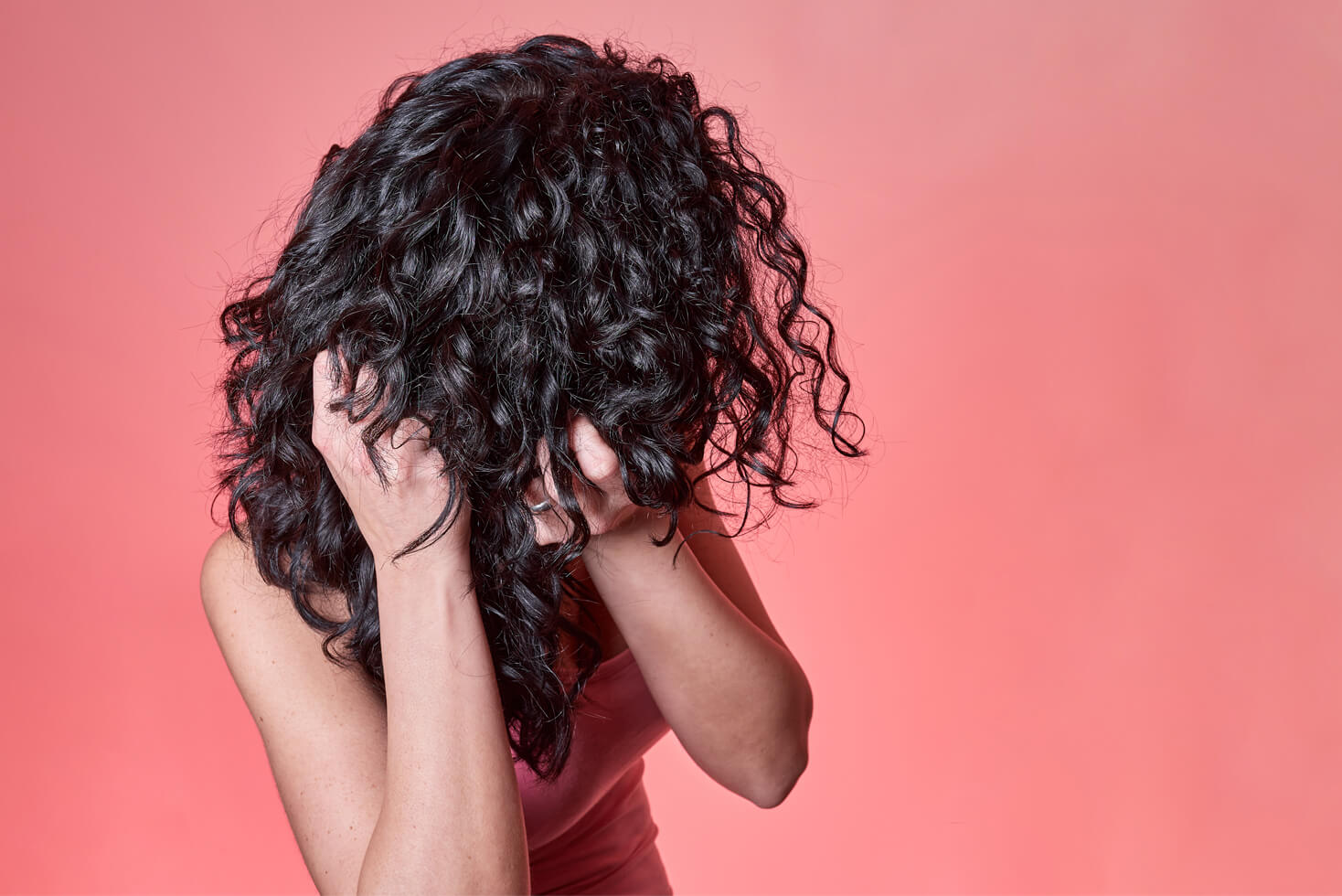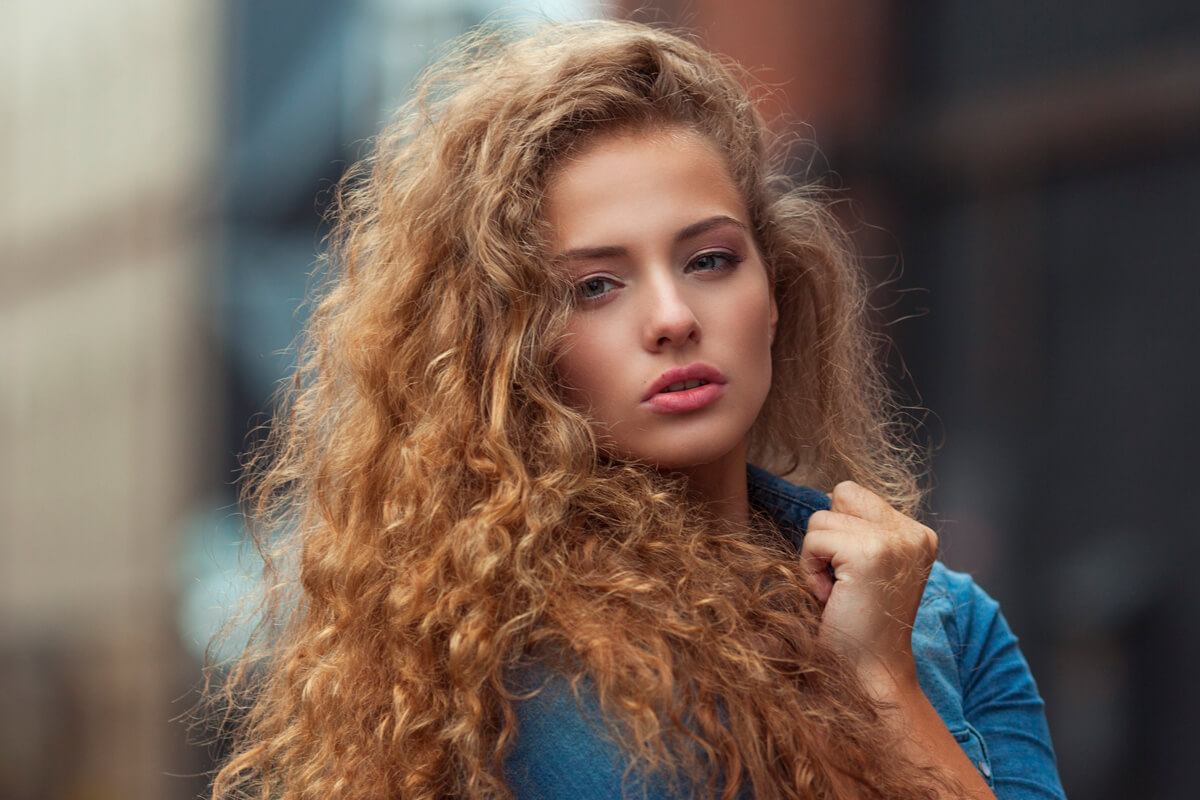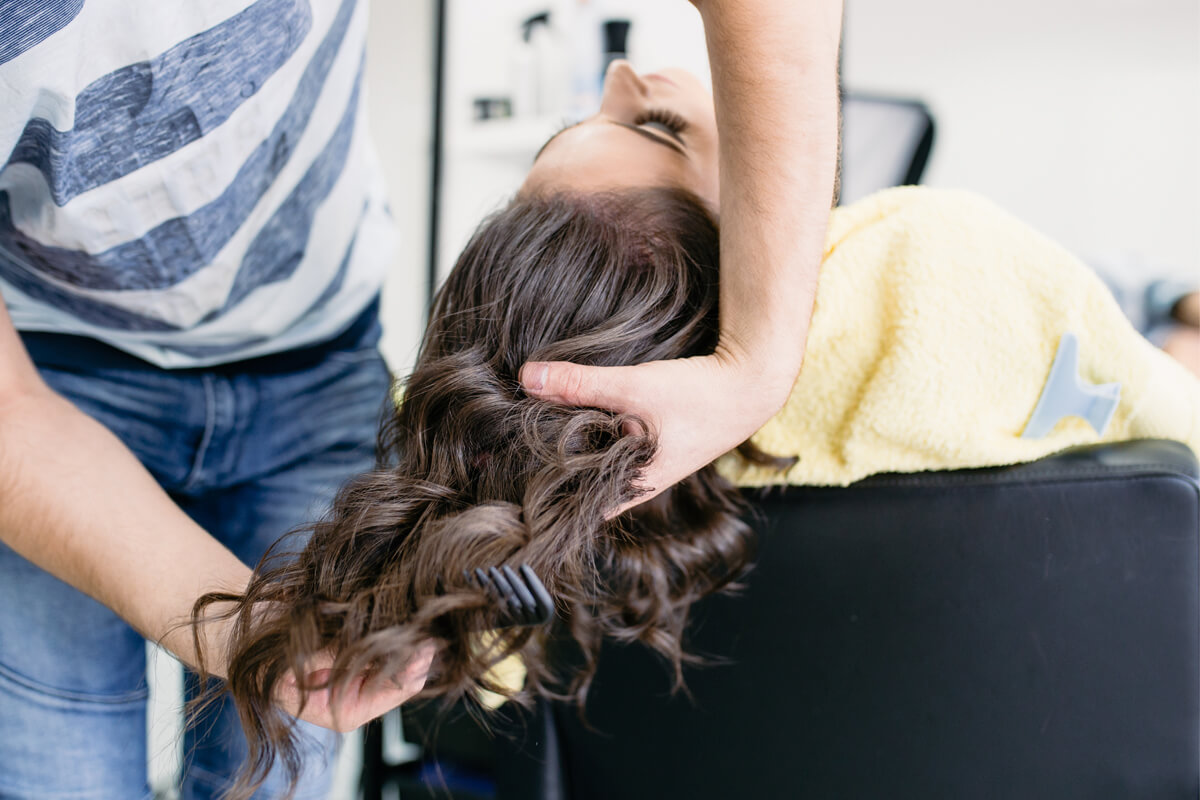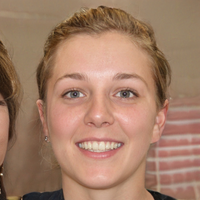How to Tame Frizzy Roots That Refuse to Blend In
Updated on
This post may contain affiliate links. As an Amazon Associate, we may earn from qualifying purchases.

Isn’t it frustrating when the bottom layer of your hair refuses to blend in with the rest?
You know, that under layer that always seems to have a totally different texture to the rest of the hair, and you can never figure out why?! 🤷♀️
If you can relate to this problem, then you have frizzy roots.
Frizzy hair roots, also commonly described as puffy roots, fluffy roots, or “little hairs sticking out,” affect both people with straight and curly hair.
On straight hair, it’s characterized by a fuzzy halo along the parting and the crown, whereas on curly hair, the roots are much curlier and dense, creating a mix of curl patterns that won’t clump together.
Unlike surface frizz that can be smoothed down easily, frizzy hair roots are trickier to deal with as they are either too short to target or hidden at the bottom, creating an under-layer frizz.
So how do you tame frizzy roots and prevent them from throwing your hairstyles into a mess?
It’s simple:
Moisturize your roots. Moisture adds softness, weight, and elasticity to the hair strands, making them flexible. And when the hairs at the roots have more weight and stretch, they easily clump together with the mass, rather than curling up or sticking out independently in all directions.
Let me explain why your hair roots get frizzy and how to embrace a root-conditioning hair care routine that ensures they are taken care of.
What Causes Frizzy Roots?

Frizzy roots are caused by new growth, dryness, or damage, resulting in hairs closer to the scalp adopting an uncontrollable and unpredictable appearance.
Here are the main causes of frizzy roots:
1. New Growth With Different Patterns
It’s normal to have a number of individual hairs shorter than the rest because every single hair has its own growth cycle.
Shorter hairs tend to stick up straight rather than clump with the rest. That’s because they don’t have enough weight and elasticity to make them fall down and bunch together.
In the case of curly hair, new growth adopts a tighter curl pattern because of the oval follicle shape, creating more fluffiness at the base.
Another problem with new hairs is that they don’t have the same texture maturity as the hairs that have already grown a few inches. So don’t expect them to clump or curl uniformly until they elongate to at least a few inches.
2. Baby Hairs Have Lower Porosity
As the hair grows out, its porosity increases along the hair shaft, enabling it to absorb and retain moisture.
Hair at the roots and new growths don’t have the same maturity as existing ones. As a result, the new shorter hairs tend to be dryer and frizzier.
3. Dryness
Other than low porosity, another factor that can contribute to frizzy roots is a dry scalp that doesn’t produce enough sebum to lubricate the base of the hair. This leads to frizz between the sebum-making glands and the bottom of the hair shaft.
4. Hair Damage Near The Roots
Frizzy hair roots may be a sign that your hair is breaking off closer to the scalp.
Breakages are more common at the end of the hair shaft, as this is the oldest and most fragile part. But, if your hair is breaking near the roots, this may indicate damage due to chemical treatments or harsh styling methods like brushing or heat styling.
So these are the common causes of frizzy roots. Now let’s find out how they manifest on different hair types to find the best ways to deal with them.
Frizzy Roots And Straight Hair
Frizzy roots on straight hair stick out like static hair and are more prominent along the parting and the crown because there’s no curl pattern to camouflage the frizz.
This type of frizzy hair is more visible when the hair is styled straight because there’s less movement and less blending with the rest of the hair.
Frizzy Roots And Wavy Hair
Frizzy roots are not as pronounced on wavy hair because of the wave pattern.
However, if you have lots of new growths or breakages below the mid-lengths, frizz is more noticeable as the hairs stick out from the waves.
Frizzy Roots And Curly Natural Hair
Frizzy roots are the norm for curly natural hair because of the curl pattern and new growth. Curls are usually tighter and defined at the roots than on other parts.
The natural curl pattern loosens as your curls grow longer due to weight, moisture, porosity, and regular wear and tear.
Frizzy roots on curly or natural hair can be described as a bottom layer of curls that are tighter and more densely packed than the top layer, creating an uneven fluffy texture that can be frustrating to manage.
Frizzy Roots And Kinky Coily Hair
Kinky coily frizzy roots are usually the result of low porosity and coarser texture. The new hairs are tightly coiled and have a matte finish, making them more visible and susceptible to frizz.
Since kinky coily hair is the most fragile type, breakage can significantly contribute to frizziness at the roots.
How to Tame and Get Rid of Frizzy Roots
The best ways to minimize frizz at the roots are by helping your hair to grow faster, adding more moisture to the roots, and improving your styling routine to minimize breakage.
So here’s a list of steps you can take to prevent frizzy roots:
1. Deep Cleanse Your Roots Regularly
Dry roots can be caused by styling product leftovers clogging the pores, affecting the scalp’s ability to distribute sebum at the base of the hair. Products like deep conditioners, masks, hairsprays, dry shampoos, and hair dyes can accumulate and build stubborn layers around the hair, preventing moisture from seeping through. On top of that, if you live in a hard water area, calcium buildup on the scalp can also choke the follicles contributing to severely dehydrated hair that leads to frizziness at the roots.
Before you start using any moisturizing products to fix your dry roots, do a clean reset.
Use a sulfate shampoo or a clarifying detox shampoo to break down the dirt, deep cleanse, and unclog the pores on your scalp once a week.
You can also use a scalp exfoliating brush or a scalp scrub to gently lift buildup and impurities, allowing your scalp to breathe and kickstart a more balanced sebum production and distribution starting at the roots.
Keeping your scalp clean, healthy, hygienic, and balanced gives every strand a better chance to grow faster and flourish.
A good scalp clarifying shampoo I recommend:
Kristin Ess Scalp Purifying Micellar shampoo
2. Condition from Root To Tip
Applying conditioner to the roots is not always recommended as it may create product buildup and can weigh your hair down. The assumption is that your scalp produces enough natural oils to lubricate the hair base; therefore, applying a conditioner can potentially overload the roots causing more greasiness.
But everyone’s hair is different. Whether or not you should apply conditioner to your roots depends on your scalp. If your scalp does not produce enough oil to moisturize the youngest hairs on your head, using a conditioner to boost moisture in that area can reduce the dryness, enhancing the elasticity of the shorter hairs that haven’t gained enough length to blend in with the rest.
Conditioning your roots enables the shorter hairs to flex and clump rather than stick up straight like dry straw or curl up due to dryness.
How To Use Conditioner On Your Roots
After shampooing, apply your conditioner to the roots and shingle throughout with your fingers for even distribution. Leave it on for a few minutes and proceed to detangle the rest of your hair if you need to.
Here’s a good lightweight conditioner I recommend for dry hair roots:
Redken Frizz Dismiss Conditioner
3. Blow Dry With A Diffuser
A diffuser distributes the air from the blow dryer more horizontally than the direct and concentrated airflow from the blow dryer head. This prevents frizziness and dehydration by preventing direct heat onto wet hair.
Place the diffuser on your scalp and blow-dry. It may take a little bit of time to dry your roots, but that’s ok. You only need them around 80% dry and allow your hair to air dry naturally.
Infiniti Pro By Conair With Diffuser
4. Get A HairCut To Blend The Under Layers

A pro hairstylist can cut your hair with clever layering techniques that create the illusion of smooth roots without cutting off too much length.
So next time you go for a trim, ask your stylist for any recommendations on haircuts or shaping that can help your roots spring back. Sometimes, even trimming 3 inches off can make a positive difference if you feel your hair is pulling the texture of your roots out.
5. Try The Curly Girl Method
The Curly Girl Method is all about minimizing shampoos and using gentle cleansing products like conditioners or silicone-free leave-in conditioners.
This method also encourages to new approach to hairstyling with better alternatives like:
- Air drying instead of blow-drying
- Scrunching instead of brushing out
- Keeping natural oils in your locks to prevent frizz
The principles behind the Curly Girl Method are to avoid any chemical products that strip natural oils from the hair and scalp.
This method seems to work well with curlies who experience frizzy and puffy roots, so it’s definitely worth a try.
Should You Trim Your Frizzy Roots?
Never attempt to trim them, as this will temporarily hide the problem. By doing so, you’re just putting off having frizzy roots until a later date. Instead, work on nurturing these baby hairs so that they can grow faster, allowing them to clump effortlessly.
How Do You Make Thick Hair Less Poofy?
Make them soft, and they will flex and blend in. Thick hair looks poofy at the roots because they are dry and stiff. To soften them, use products that are sulfate-free, contain glycerin, butter, and hydrolyzed silk to add more smoothness. By softening the texture and boosting moisture in thicker hairs, they loosen up.
Frizzy Roots Is Just Another Type of Frizz
Frizzy roots happen when the hairs closer to the scalp don’t align with the rest of your hair pattern due to lack of length, weight, moisture, or damage. As a result, the hair at the base exhibits a different texture, often making it difficult to detangle and clump with the rest of the hairs.
While it may not be as prominent as other types of frizz that occurs on the outer layers of the hair, it canmake styling the hair challenging especially for individuals with curly hair.
Frizzy roots is type of frizz that requires a good root to tip haircare regimen.
About the Author
 Charlene Latreuille
Charlene LatreuilleCharlene Latreuille has been blogging for over 10 years and has a background in digital marketing.
Specializing in women's hair health, she blends scientific insight with practical advice, crafting easy-to-follow guides.


